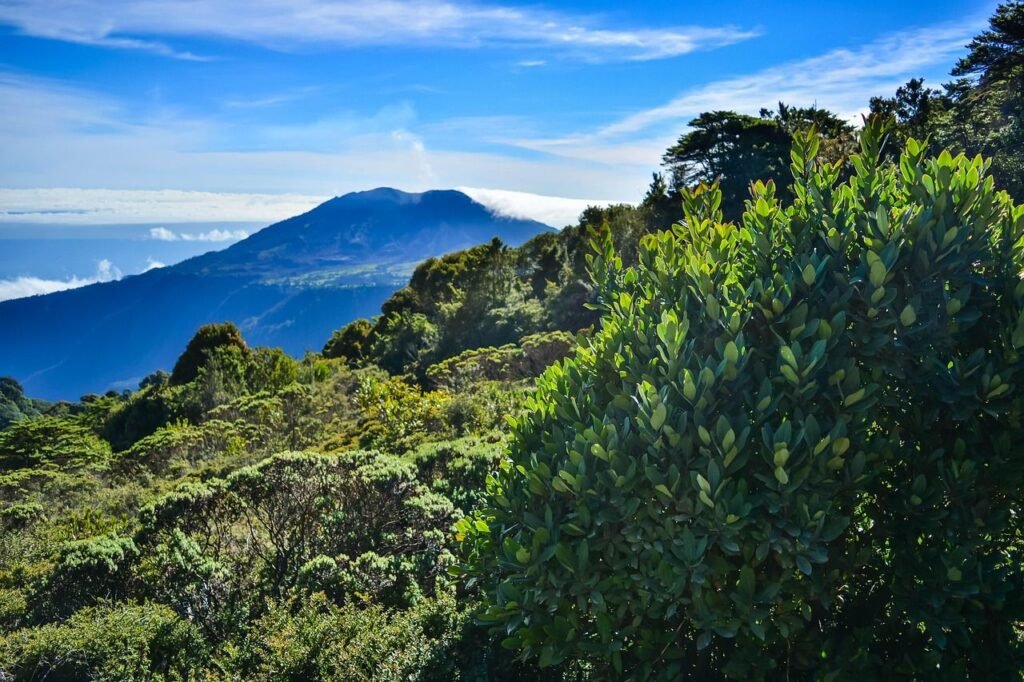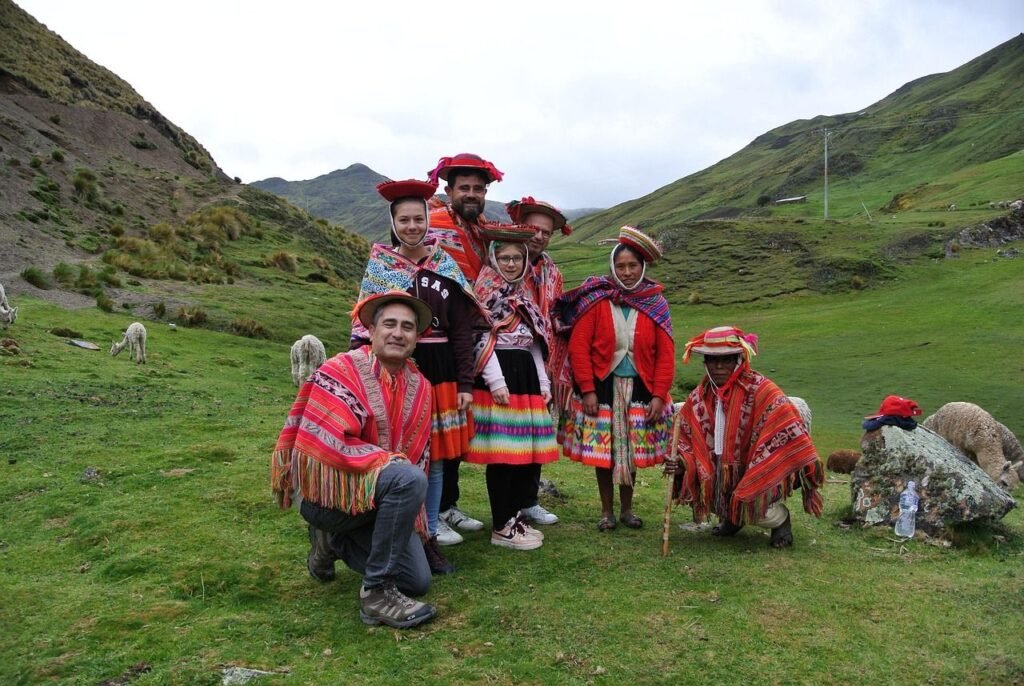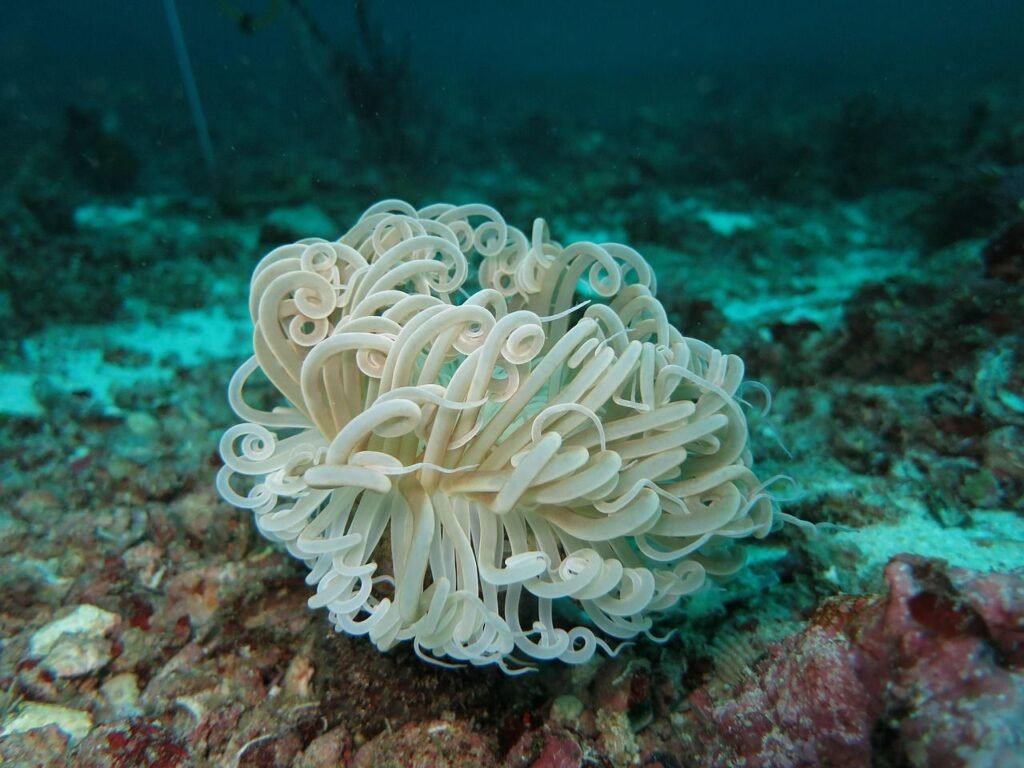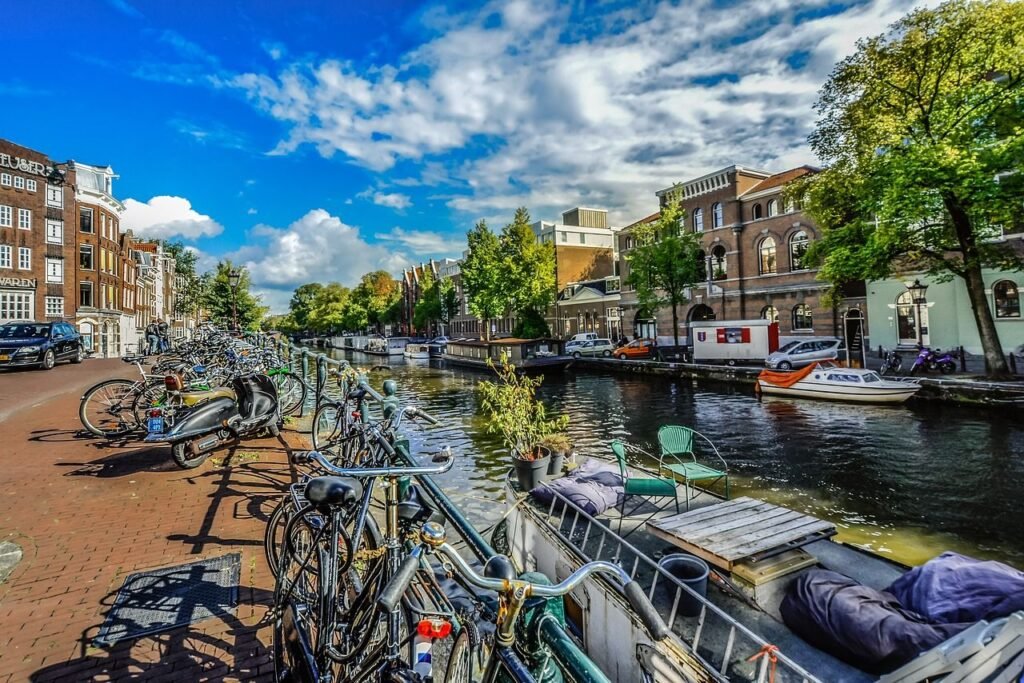Physical Address
304 North Cardinal St.
Dorchester Center, MA 02124

What is Sustainable Tourism? Why It’s the Conscious Traveler’s Choice in 2025

how sustainable tourism is transforming the way we explore the world
Discover how sustainable tourism is transforming the way we explore the world while protecting destinations for future generations. Learn the five pillars of responsible travel and why millions of conscious travelers are choosing sustainability in 2025.
Have you ever wondered if your travel choices could make a real difference to the places you visit? Picture this: standing in a pristine national park, breathing fresh mountain air, knowing that your visit directly supports local conservation efforts rather than contributing to environmental degradation. This is the essence of sustainable tourism, a movement that’s reshaping how we explore our world.
In my years of traveling to remote corners of the globe, I’ve witnessed both the devastating effects of overtourism and the incredible transformation that occurs when destinations embrace sustainable practices. From the crystal-clear waters of Costa Rica’s protected marine reserves to the thriving indigenous communities in Peru’s Sacred Valley, sustainable tourism isn’t just a buzzword,it’s a lifeline for our planet’s most precious destinations.
Sustainable tourism represents a conscious approach to travel that seeks to minimize negative impacts while maximizing benefits for destinations, communities, and travelers themselves. Unlike traditional mass tourism, which often prioritizes short-term profits over long-term well-being, sustainable tourism takes a holistic view of travel’s effects on environmental, social, and economic systems.
The World Tourism Organization defines sustainable tourism as tourism that “takes full account of its current and future economic, social and environmental impacts, addressing the needs of visitors, the industry, the environment, and host communities.” This isn’t about limiting your travel experiences—it’s about enhancing them through meaningful connections and responsible choices.
During a recent visit to Bhutan, I experienced firsthand how sustainable tourism policies can preserve cultural authenticity while providing incredible experiences for visitors. The country’s “High Value, Low Impact” tourism policy ensures that every visitor contributes meaningfully to conservation and community development, creating an atmosphere where tourism enhances rather than diminishes the destination’s unique character.

Bhutan-High-value, low-impact tourism
Understanding sustainable tourism requires exploring its five fundamental pillars, each representing a crucial aspect of responsible travel:
Environmental sustainability forms the foundation of responsible tourism. This pillar focuses on minimizing our ecological footprint while traveling, protecting natural resources, and supporting conservation efforts. When you choose eco-certified accommodations or participate in wildlife conservation programs, you’re actively contributing to environmental sustainability.
The pristine beauty of Iceland’s geothermal pools exists today because of strict environmental regulations and sustainable tourism practices. Visitors can enjoy these natural wonders while knowing their presence supports ongoing conservation efforts through entrance fees and environmental education programs.
This pillar emphasizes respecting local cultures, traditions, and social structures. Sustainable tourism should enhance rather than erode cultural authenticity, ensuring that local communities maintain their identity while benefiting from tourism revenue.
In Morocco’s Atlas Mountains, community-based tourism initiatives allow visitors to stay with Berber families, learning traditional crafts and customs while providing direct income to rural communities. These Cultural Experiences create lasting memories while preserving ancient traditions.
Economic sustainability ensures that tourism generates long-term financial benefits for local communities rather than extracting wealth for external corporations. This involves supporting local businesses, buying locally-made products, and choosing tour operators that prioritize fair wages and working conditions.
Responsible resource management involves using water, energy, and other natural resources efficiently while minimizing waste generation. This includes choosing accommodations with renewable energy systems, participating in water conservation programs, and supporting businesses that prioritize resource efficiency.
The final pillar focuses on meaningful engagement between visitors and local communities, ensuring that tourism development reflects community needs and values. This involves consulting with local stakeholders, supporting community-led initiatives, and creating opportunities for authentic cultural exchange.

Costa Rica- wildlife protection on an unprecedented scale.
Costa Rica stands as a global leader in sustainable tourism, transforming from a country that had lost most of its forest cover to one where tourism directly funds conservation. The country’s national parks system, supported by entrance fees and eco-lodge partnerships, has enabled forest regeneration and wildlife protection on an unprecedented scale.
Visitors to Costa Rica can witness this transformation firsthand, from the cloud forests of Monteverde to the sea turtle nesting beaches of Tortuguero. Each tourist dollar spent supports conservation efforts, creating a sustainable cycle where Nature & Wildlife experiences directly contribute to habitat protection.

New Zealand’s Tiaki Promise
New Zealand’s Tiaki Promise represents a comprehensive approach to sustainable tourism, asking visitors to commit to caring for the country’s natural environment, respecting local culture, and traveling safely. This initiative demonstrates how destinations can educate visitors about responsible behavior while maintaining the quality of experiences.

Peru-Staying in community-owned accommodation
In Peru’s Sacred Valley, Quechua communities have developed tourism initiatives that showcase traditional weaving, farming, and cultural practices. Visitors can participate in potato harvesting, learn ancient textile techniques, and stay in community-owned accommodations, ensuring that tourism revenue directly benefits indigenous families.
These experiences offer visitors authentic insights into Andean culture while providing sustainable livelihoods for communities that might otherwise migrate to urban areas. The success of these programs has inspired similar initiatives across Latin America, creating a network of community-based tourism opportunities.
The primary environmental goal of sustainable tourism involves protecting natural ecosystems, reducing carbon footprints, and supporting conservation initiatives. This includes choosing destinations that prioritize environmental protection, participating in conservation activities, and selecting low-impact transportation options.
Climate change poses significant threats to many of the world’s most beloved destinations. From coral reef bleaching in the Caribbean to glacier retreat in the Alps, tourism destinations face unprecedented environmental challenges. Sustainable tourism provides a framework for addressing these issues while maintaining the economic benefits of travel.
Sustainable tourism aims to preserve local cultures, traditions, and languages while preventing the commodification of cultural practices. This involves supporting authentic cultural experiences, respecting local customs, and choosing tour operators that prioritize cultural sensitivity.
The ancient temples of Angkor Wat in Cambodia demonstrate both the challenges and opportunities of cultural preservation in tourism. While massive visitor numbers threatened these Historical Wonders, sustainable tourism initiatives now limit daily visitors and channel tourism revenue into conservation and community development programs.
Sustainable tourism seeks to generate long-term economic benefits for destination communities, particularly in developing countries where tourism can provide crucial income opportunities. This involves supporting local businesses, creating employment opportunities, and ensuring that tourism revenue remains within local communities.
Another crucial objective involves educating travelers about environmental and cultural issues while fostering greater awareness of global challenges. Sustainable tourism experiences often include educational components that help visitors understand local ecosystems, cultural practices, and conservation needs.
Advanced technology now enables more sustainable travel choices than ever before. Carbon offset calculators help travelers understand and mitigate their environmental impact, while apps connect visitors with local sustainable businesses and experiences.
Blockchain technology is revolutionizing sustainable tourism by creating transparent supply chains that allow travelers to verify the sustainability claims of accommodations and tour operators. This transparency empowers conscious consumers to make informed choices while holding businesses accountable for their environmental and social practices.
Beyond minimizing negative impacts, the emerging regenerative tourism movement focuses on creating positive contributions to destinations. This approach views tourism as a tool for environmental restoration, cultural revitalization, and community empowerment.
The COVID-19 pandemic fundamentally shifted traveler priorities, with many seeking more meaningful, less crowded experiences. This shift aligns perfectly with sustainable tourism principles, creating opportunities for destinations to develop lower-impact, higher-value tourism models.
Sustainable travel doesn’t require luxury budgets. Hostels with environmental certifications, locally-owned guesthouses, and eco-lodges offer sustainable accommodation options across all price ranges. Many sustainable accommodations actually save money through resource efficiency, passing these savings to guests.
In Thailand, budget travelers can stay in bamboo bungalows powered by solar energy for less than the cost of conventional hotels, while supporting local communities and environmental conservation. These experiences often provide more authentic cultural interactions than expensive resort accommodations.
Choosing overland transportation over flights when possible represents one of the most effective ways to reduce travel’s environmental impact while often saving money. Train travel through Europe, bus networks in South America, and local transportation options provide sustainable alternatives to short-haul flights.
For families planning budget-conscious sustainable trips, consider destinations accessible by train or bus from your home region. Family Trip Planning with sustainability in mind often reveals nearby gems that offer incredible experiences without the environmental and financial costs of long-distance travel.
Eating locally-produced food reduces environmental impact while supporting local economies and providing authentic cultural experiences. Street food markets, local restaurants, and community kitchens often offer the most sustainable and budget-friendly dining options.
In Vietnam, joining cooking classes that include market visits provides insights into local food systems while teaching skills you can use at home. These experiences typically cost less than tourist restaurants while offering more meaningful cultural connections.
Successful sustainable tourism requires cultural sensitivity and respect for local customs. This involves researching destination cultures before traveling, learning basic phrases in local languages, and understanding appropriate behavior in different contexts.
During my travels through rural Nepal, I learned that simple gestures like removing shoes before entering homes and using both hands when receiving gifts demonstrate respect for local customs. These small actions significantly enhance interactions with local communities while showing appreciation for cultural differences.
Indigenous communities often serve as guardians of the world’s most biodiverse regions, making their support crucial for conservation efforts. Sustainable tourism can provide economic alternatives to activities that threaten natural resources while preserving traditional knowledge and practices.
The Maasai communities surrounding Kenya’s Maasai Mara have developed community conservancies that generate income through sustainable tourism while protecting wildlife habitats. Visitors can participate in cultural experiences, wildlife viewing, and conservation activities while directly supporting community development.
Learning basic phrases in local languages demonstrates respect and often leads to more meaningful interactions with local people. Even simple greetings, “please,” “thank you,” and “excuse me” can transform travel experiences and show appreciation for local cultures.
Responsible wildlife tourism can provide crucial funding for conservation while offering incredible experiences for visitors. However, this requires choosing operators that prioritize animal welfare and conservation over entertainment value.
Ethical wildlife experiences focus on observation rather than interaction, maintain appropriate distances from animals, and contribute directly to conservation efforts. The mountain gorilla tracking programs in Rwanda demonstrate how high-value, low-impact tourism can fund conservation while providing local communities with sustainable livelihoods.
Ocean destinations face particular challenges from climate change, pollution, and overfishing. Sustainable marine tourism supports conservation efforts while educating visitors about ocean ecosystems and threats facing marine environments.
The coral restoration programs in the Philippines allow visitors to participate in reef conservation while learning about marine ecosystems. These programs provide crucial funding for conservation research while creating awareness about ocean conservation needs.

Philippines-Coral reef restoration
While carbon offsets can’t completely eliminate travel’s environmental impact, they provide a mechanism for supporting climate mitigation projects while working to reduce overall emissions. Quality carbon offset programs support renewable energy development, reforestation, and community development projects.
The most effective approach combines emission reduction with high-quality offsets. This might involve choosing closer destinations, staying longer to justify transportation emissions, and selecting accommodations with renewable energy systems.
Understanding eco-certification programs helps travelers identify truly sustainable accommodations and services. Reputable certifications include Green Key, EarthCheck, and the Global Sustainable Tourism Council standards, which evaluate environmental, social, and economic sustainability practices.
Choosing locally-owned accommodations ensures that tourism revenue remains within destination communities rather than flowing to international corporations. Local ownership often provides more authentic experiences while supporting local employment and entrepreneurship.
Family-run guesthouses, community-owned lodges, and locally-operated tour companies typically offer more personalized service while providing greater cultural insights than large international chains.
Sustainable accommodations incorporate environmental considerations into their design and operations through renewable energy systems, water conservation technologies, local building materials, and waste reduction programs.
The eco-lodges in Costa Rica’s cloud forests demonstrate how sustainable design can enhance rather than compromise comfort. These accommodations use rainwater collection, solar power, and natural ventilation to minimize environmental impact while providing incredible wildlife viewing opportunities right from guest rooms.
Overland travel often provides more immersive experiences while reducing environmental impact compared to flying. Train journeys across continents, bus routes through mountain regions, and coastal road trips offer opportunities to witness landscape changes and interact with local communities along the way.
The Trans-Siberian Railway provides one of the world’s great overland adventures, crossing multiple countries and time zones while generating significantly lower emissions than equivalent flights. These journeys become destinations themselves, offering Hidden Gems and cultural experiences impossible to access by air.

The Trans-Siberian Railway
In destinations, choosing public transportation, walking, and cycling reduces environmental impact while often providing more authentic local experiences. Many cities now offer bike-sharing programs, efficient public transit systems, and pedestrian-friendly infrastructure that make car rental unnecessary.
The bicycle culture in Amsterdam and Copenhagen demonstrates how sustainable urban transportation can enhance rather than limit travel experiences. Cycling through these cities provides intimate access to neighborhoods, local life, and hidden corners that remain invisible from car windows.

The bicycle culture in Amsterdam
When vehicle rental becomes necessary, choosing electric or hybrid options reduces environmental impact while often providing superior performance and comfort. The expanding network of charging stations makes electric vehicle travel increasingly feasible in many regions.
Effective sustainable travel planning begins with thorough destination research, including understanding local environmental challenges, cultural sensitivities, and community needs. This preparation ensures that travel choices align with sustainability goals while maximizing positive impacts.
Planning Travel Trips with sustainability in mind requires considering factors like seasonal environmental impacts, local economic conditions, and infrastructure capabilities. The dry season might offer better wildlife viewing but could also strain water resources in some destinations.
Traveling during shoulder seasons often provides better experiences for both visitors and destinations while reducing overcrowding pressure on popular sites. These periods typically offer more authentic cultural interactions, better value accommodations, and reduced environmental impact.
Choosing destinations that prioritize sustainability sends market signals that encourage responsible tourism development. Countries and regions with strong environmental protection policies, community-based tourism initiatives, and cultural preservation programs deserve support from conscious travelers.
The small island nations in the Pacific demonstrate remarkable innovation in sustainable tourism despite limited resources. These destinations offer unique experiences while showcasing how tourism can support island communities and marine conservation efforts.
Sustainable travel often requires different budgeting approaches, potentially spending more on accommodations and activities while saving on transportation and dining through local choices. This reallocation often results in richer experiences while supporting destination communities.
Meaningful sustainable travel itineraries balance must-see attractions with lesser-known destinations, providing comprehensive destination experiences while distributing tourism benefits more widely. This approach often reveals Popular Destinations alongside undiscovered treasures.
Spending more time in fewer places allows for deeper cultural immersion while reducing transportation emissions and providing greater economic benefits to visited communities. This approach transforms travel from destination collecting into meaningful cultural exchange.
Modern travelers have access to unprecedented tools for making sustainable choices. Apps that calculate transportation emissions, identify sustainable accommodations, and connect travelers with local experiences make responsible travel more accessible than ever.
The emergence of sustainable tourism platforms creates marketplaces specifically for responsible travel options, making it easier for conscious travelers to find and book sustainable experiences while supporting businesses committed to sustainability principles.
Virtual reality technology offers potential solutions for destination preservation by providing immersive experiences that reduce pressure on fragile sites while generating revenue for conservation efforts. These technologies can complement rather than replace physical travel, offering preview experiences that enhance later visits.
Blockchain technology enables unprecedented transparency in sustainable tourism by creating verifiable records of environmental and social impact. This technology allows travelers to verify sustainability claims while rewarding businesses that demonstrate genuine commitment to responsible practices.
The tourism industry is experiencing fundamental transformation as sustainability moves from niche concern to mainstream expectation. Major travel companies are implementing comprehensive sustainability strategies, while new businesses emerge specifically to serve conscious travelers.
This transformation creates opportunities for destinations to develop innovative sustainable tourism models that provide economic benefits while protecting environmental and cultural resources. The success of these models will likely determine the future viability of many tourism destinations.
Travel consumer behavior continues evolving toward greater sustainability awareness, driven by climate change concerns, pandemic-related reflections on travel’s impacts, and increasing awareness of cultural sensitivity issues.
Governments worldwide are implementing policies that encourage sustainable tourism development while discouraging practices that harm destinations. These policies range from tourist taxes that fund conservation to regulations that limit visitor numbers at sensitive sites.
The European Union’s sustainable tourism initiatives demonstrate how policy frameworks can encourage industry transformation while protecting destinations and communities. These approaches provide models for other regions seeking to develop sustainable tourism strategies.
Understanding and measuring travel’s carbon footprint provides the foundation for making more sustainable choices and offsetting unavoidable emissions. Various online calculators help travelers estimate emissions from transportation, accommodation, and activities.
The most comprehensive approach considers not just direct emissions but also indirect impacts like infrastructure development, waste generation, and resource consumption at destinations.
Measuring travel’s social and cultural impacts requires more nuanced approaches than carbon calculations but remains equally important for sustainable tourism. This involves considering factors like cultural commodification, community displacement, and economic inequality.
Understanding where tourism money goes within destinations helps travelers make choices that maximize local economic benefits. This might involve choosing locally-owned accommodations, eating at family restaurants, and purchasing handicrafts directly from artisans.
The growing community of conscious travelers provides support, inspiration, and practical advice for sustainable travel experiences. Online communities, travel forums, and local meetups offer opportunities to connect with others who share sustainability values.
These communities often share practical tips, destination recommendations, and accountability support that enhance sustainable travel experiences while building lasting friendships based on shared values.
Documenting and sharing sustainable travel experiences helps build awareness and inspire others to make more responsible choices. This might involve writing blog posts, sharing social media content, or contributing to travel forums focused on sustainability.
Experienced sustainable travelers often become advocates for responsible tourism policies and practices, using their knowledge and influence to encourage industry transformation and destination protection.
Begin your sustainable travel journey before leaving home by researching destinations thoroughly, packing efficiently to reduce luggage weight, and choosing appropriate equipment that minimizes environmental impact during your trip.
Consider learning basic repair skills for common travel equipment failures, reducing the need to purchase new items during your trip while developing self-reliance skills that enhance travel experiences.
While traveling, practice resource conservation by taking shorter showers, reusing towels, turning off lights and air conditioning when absent, and carrying reusable water bottles and shopping bags.
Respect local customs and environments by following Leave No Trace principles, staying on designated trails, properly disposing of waste, and avoiding activities that disturb wildlife or damage natural areas.
After returning home, continue supporting destinations you’ve visited by purchasing products from local artisans, advocating for conservation programs, and sharing your experiences to inspire others toward sustainable travel.
Consider maintaining connections with local communities you’ve met, perhaps through social media or ongoing support for community development projects you encountered during your travels.
Many people assume sustainable tourism requires expensive accommodations and activities, but this misconception prevents many from exploring responsible travel options. In reality, sustainable tourism often costs less than conventional tourism while providing richer experiences.
Local accommodations, public transportation, and community-based activities typically cost less than international chains, luxury resorts, and packaged tours while providing more authentic cultural experiences and greater benefits to local communities.
Another common misconception suggests that sustainable tourism limits destination choices or requires visiting only remote, undeveloped locations. In fact, sustainable tourism principles can be applied anywhere, from major cities to wilderness areas.
Urban destinations often offer exceptional opportunities for sustainable tourism through public transportation systems, local restaurants, cultural institutions, and community-based activities that provide authentic experiences while supporting local economies.
Some travelers worry that sustainable tourism requires sacrificing comfort and convenience, but modern sustainable tourism options provide excellent comfort levels while minimizing environmental and social impacts.
Eco-lodges in tropical destinations often provide luxury amenities powered by renewable energy, while sustainable urban accommodations offer modern comfort with environmental innovations that enhance rather than compromise guest experiences.
Adventure tourism and eco-tourism provide natural foundations for sustainable travel, combining outdoor experiences with environmental education and conservation support. These activities often take place in protected areas where tourism revenue directly supports conservation efforts.
Rock climbing in national parks, wildlife photography safaris, and marine conservation expeditions offer adrenaline-filled experiences while contributing to environmental protection and community development in destination areas.
Cultural and heritage tourism focuses on experiencing and learning about local cultures, traditions, and historical sites while supporting cultural preservation efforts. These experiences provide deep insights into destination cultures while generating revenue for cultural preservation and community development.
Wellness tourism increasingly incorporates sustainability principles, recognizing connections between personal well-being and environmental health. Sustainable wellness experiences often take place in natural settings and incorporate local healing traditions and practices.
Yoga retreats in natural settings, meditation programs in protected forests, and traditional healing experiences with indigenous communities provide personal renewal while supporting environmental and cultural conservation.
Volunteer tourism allows travelers to contribute directly to destination communities while gaining hands-on experience with local challenges and solutions. Quality volunteer programs provide meaningful assistance while offering educational experiences for participants.
Marine conservation programs, community development projects, and educational initiatives provide opportunities for travelers to make direct positive contributions while learning about global issues and developing new skills.
Bhutan’s unique approach to development prioritizes Gross National Happiness over economic growth, creating a tourism model that emphasizes quality over quantity. The country’s “High Value, Low Impact” tourism policy demonstrates how small nations can use tourism to support development while preserving cultural and environmental integrity.
Visitors to Bhutan experience authentic Himalayan culture while contributing to conservation efforts and community development through mandatory daily sustainability fees that fund education, healthcare, and environmental protection programs.
Rwanda’s transformation from a country devastated by conflict to a leader in conservation and sustainable tourism demonstrates the potential for tourism to drive positive change. The country’s mountain gorilla conservation programs generate crucial funding while providing local communities with sustainable livelihoods.
Costa Rica continues leading global sustainable tourism efforts through comprehensive environmental protection policies, extensive protected area systems, and innovative eco-tourism programs that demonstrate how environmental protection and economic development can complement each other.
The country’s success in forest regeneration, wildlife protection, and sustainable tourism development provides a model for other destinations seeking to balance conservation with economic development through responsible tourism.
European destinations increasingly implement comprehensive sustainability measures, from Amsterdam’s visitor management strategies to Iceland’s geothermal energy tourism programs. These initiatives demonstrate how developed destinations can transition toward more sustainable tourism models.
The European Union’s sustainable tourism framework provides policy support for destinations implementing sustainability measures while creating market incentives for businesses adopting responsible practices.
Asian destinations showcase remarkable innovation in sustainable tourism, from Singapore’s urban sustainability programs to rural community-based tourism initiatives in Nepal and Vietnam. These diverse approaches demonstrate how different cultural and economic contexts can support sustainable tourism development.
African destinations excel in community-based tourism programs that provide direct benefits to local communities while offering visitors authentic cultural experiences. These programs often operate in conjunction with conservation efforts, creating economic incentives for wildlife protection.
The success of community conservancies in Kenya and Namibia demonstrates how tourism can provide alternative livelihoods that support both community development and conservation goals.
Latin American destinations offer diverse sustainable tourism models, from Costa Rica’s eco-tourism leadership to Peru’s community-based tourism initiatives and Colombia’s post-conflict tourism development programs.
These destinations demonstrate how sustainable tourism can contribute to economic development, peace building, and cultural preservation while protecting some of the world’s most biodiverse ecosystems.
Sustainable travel often transforms travelers themselves, developing greater environmental awareness, cultural sensitivity, and global perspective that influence lifestyle choices long after returning home.
Many sustainable travelers report that their experiences inspire changes in consumption patterns, career choices, and community involvement, extending travel’s positive impacts far beyond the destinations visited.
Sustainable travel contributes to global citizenship development by fostering understanding of interconnections between local actions and global consequences. These experiences often inspire ongoing engagement with global issues and support for international development and conservation efforts.
Conscious travelers often inspire friends, family, and social networks to make more sustainable choices, creating ripple effects that extend travel’s positive impacts throughout communities.
Sharing sustainable travel experiences through social media, conversations, and community presentations helps build awareness and normalize sustainable travel practices, contributing to broader shifts in travel culture.
As I reflect on my journey through sustainable tourism over the past decade, I’m struck by how much the landscape has changed. What once required extensive research and compromise now offers abundant options that often exceed traditional tourism in quality and meaning. The shift toward conscious travel isn’t just a trend, it’s a fundamental transformation in how we understand our relationship with the places we visit and the communities that welcome us.
Your choices as a traveler hold remarkable power. Every booking decision, every meal purchase, every activity selection contributes to a global conversation about the future of tourism. When you choose Honeymoon Getaways that support local communities, when you explore Planning Tourist Routes that distribute benefits beyond major attractions, you’re voting for a more equitable and sustainable world.
The path forward requires each of us to see beyond the immediate gratification of travel toward its lasting impacts. Sustainable tourism isn’t about limiting our adventures, it’s about enriching them with purpose and meaning. As we move through 2025 and beyond, the destinations that thrive will be those that embrace sustainability not as a marketing tool but as a fundamental operating principle.
The future of travel lies in our collective hands. By choosing sustainable tourism, we’re not just protecting destinations for future generations, we’re discovering that the most transformative travel experiences come from genuine connection with places and people, not from consuming them. This is your invitation to join a movement that’s reshaping not just how we travel, but how we live as global citizens.
Are you ready to make your next journey one that creates positive change while offering experiences more meaningful than you ever imagined? The world is waiting, and conscious travelers like you are leading the way toward a more sustainable future.
What makes tourism truly sustainable? Truly sustainable tourism creates positive environmental, social, and economic impacts while minimizing negative effects. This involves supporting local communities, protecting natural resources, preserving cultures, and ensuring long-term viability of destinations.
Is sustainable tourism more expensive than regular tourism? Not necessarily. While some sustainable options may cost more upfront, they often provide better value through authentic experiences, local ownership, and resource efficiency. Many sustainable choices, like local transportation and community-based accommodations, actually cost less than conventional alternatives.
How can I verify if a tourism business is genuinely sustainable? Look for recognized certifications like Green Key, EarthCheck, or Global Sustainable Tourism Council standards. Research the company’s specific practices, community involvement, and environmental policies. Genuine sustainable businesses are transparent about their impacts and initiatives.
Can families with children practice sustainable tourism effectively? Absolutely. Sustainable tourism often provides excellent family experiences through nature-based activities, cultural learning opportunities, and community interactions. Many sustainable accommodations cater specifically to families while teaching children about environmental and cultural responsibility.
What should I do if sustainable options aren’t available in my desired destination? Focus on making the most sustainable choices available, such as staying longer to justify transportation emissions, choosing locally-owned accommodations, eating at local restaurants, and supporting community-based activities. Even small choices contribute to positive change.
How do I calculate and offset my travel carbon footprint? Use online carbon calculators that consider transportation, accommodation, and activities. Choose high-quality offset programs that support renewable energy, reforestation, or community development projects. However, focus first on reducing emissions through conscious travel choices.
What’s the difference between eco-tourism and sustainable tourism? Eco-tourism focuses specifically on nature-based experiences that support conservation, while sustainable tourism encompasses broader environmental, social, and economic considerations across all types of travel. Eco-tourism is one component of the larger sustainable tourism framework.
This article is exclusively created for and protected by travelgoeasy.net. Unauthorized copying or reproduction is strictly prohibited. All content is original and designed to provide valuable insights for conscious travelers seeking sustainable tourism experiences.
The world is waiting, and conscious travelers like you are leading the way toward a more sustainable future.





[…] Get Started Now […]
[…] Get Started Now […]
[…] Get Started Now […]